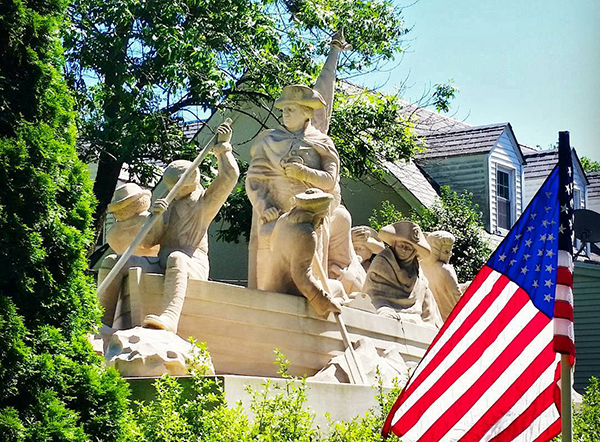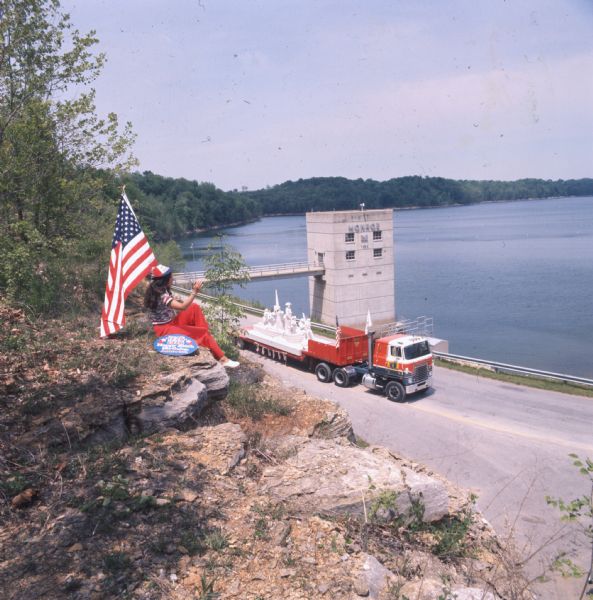You’ve probably driven past the corner of River Road and Route 532 in Washington Crossing and spotted an almost life-size sculpture depicting Washington’s crossing of the Delaware River. Have you ever wondered why it’s there? Contrary to what many believe, the statue is not owned or maintained by the park.
Here’s the full story.
In 1974, as the United States approached its bicentennial, a Chamber of Commerce official named Merle Edington in Bedford, Indiana, wanted to present the American people with a gift from the citizens of Bedford in celebration of our nation’s heritage. He envisioned depicting an important event from the American Revolution, so he visited various historical sites in Pennsylvania looking for inspiration.
On a Sunday afternoon, he entered Washington Crossing Historic Park and met Anne Hawkes-Hutton, founder and chair of the Washington Crossing Foundation. Hawkes-Hutton shared the non-profit foundation’s vision of a greater appreciation of George Washington and his leadership throughout the American Revolution, while Edington brought his deep knowledge of limestone and a dedication to American history.
That meeting not only marked the beginning of a new friendship, it also gave birth to the idea of commissioning a statue based on Emmanuel Leutze’s famous painting of George Washington crossing the Delaware River.
“Their hope was to carry on faith in our nation and to continue the spirit of patriotism,” says Kate Hutton-Tweedy, a volunteer trustee for the foundation and the daughter of Anne Hawkes-Hutton. “Mr. Edington and my mother wanted the statue to serve as a reminder of the courageous event that occurred here 200 years ago.”
This project was no small task. Edington commissioned Frank Arena, a 76-year-old retired limestone carver, to create the sculpture. Arena’s final product was a near life-size, three-dimensional, 30-ton reproduction of Leutze’s famous painting of Washington and 11 soldiers battling through chunks of ice to cross the Delaware. The sculpture required 80 tons of limestone, and the finished product is 17.5 feet long by 11.6 feet high.
Even though the carvers used Leutze’s painting as a guide, they had to create the other two dimensions on their own because the painting only shows one perspective. Each figure was individually carved, fitted and glued into the limestone boat. One laborer who worked to epoxy the individual statues to the boat claimed that he hid a miniature flag, a 1976 half dollar, the names of the sculptors, and the names of his wife and children in the glue that fastened the final statue to the boat.
Once finished, the statue toured the Bedford area for a few months before it was loaded onto a flatbed truck and delivered to its current resting place next to the historic Washington Crossing Inn, where it’s cared for to this day by the Washington Crossing Foundation.
“The statue is a labor of love for us at the foundation,” says Hutton-Tweedy. “It’s wonderful to see visitors from around the world stop to take pictures with it.”



